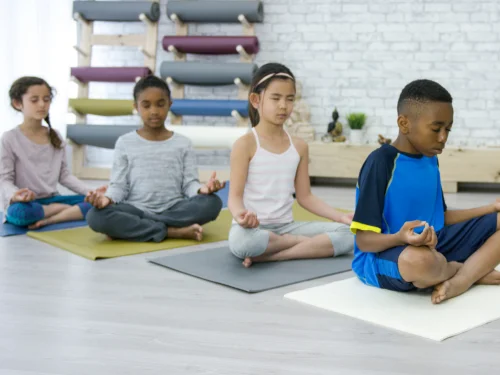How to Get Children to Listen: 8 Practical Strategies for Parents

Yes—finger plays, clapping games, and dance routines that use hand gestures all help. Combine rhythm and repetition for deeper learning.
Send home simple activity ideas, kits, or worksheets. Offer short instructions and encourage family involvement. Regular practice builds lasting progress.
Try origami, sticker scenes, stringing pasta, or painting with Q-tips. Crafts that use small pieces build precision and control.
Parenting often feels like a loop of repeating yourself: “Put on your shoes.” … “Put on your shoes.” … “Put. On. Your. Shoes.”
When children don’t listen, it can be frustrating and exhausting. But here’s the truth—most of the time, they do hear us. The challenge isn’t about hearing, it’s about responding. Understanding why kids tune us out (and how to engage them better) can transform everyday struggles into opportunities for cooperation.
Key Takeaways
- Kids often “don’t listen” due to distraction, timing, or developmental limits—not defiance.
- Connection before correction improves cooperation.
- Keep instructions short, positive, and clear.
- Offer choices to give kids a sense of control.
- Model listening yourself and balance correction with connection.
Why Kids Don’t Listen

Before diving into strategies, it helps to understand why kids resist. Common reasons include:
- Seeking independence – Saying “no” or ignoring requests is a way of asserting control.
- Distraction – Children become absorbed in play, screens, or their own thoughts.
- Poor timing – Asking mid-game or during a tired moment can make compliance unlikely.
- Overload – Too many instructions at once can overwhelm them.
- Developmental stage – Young children simply don’t have the same impulse control or memory adults do.
Recognizing these factors reframes “not listening” from defiance to a developmental reality.
The Listening Equation: Connection Before Correction
Children are more likely to respond when they feel connected and respected. Instead of barking orders from across the room, try slowing down, moving closer, and engaging. Think connection first, instruction second.
Practical Strategies That Work
.webp)
Here are evidence-based and parent-tested ways to encourage listening and cooperation.
1. Keep Instructions Short and Clear
One or two steps at a time is best. Instead of, “Go upstairs, put away your toys, brush your teeth, and pick up your clothes,” try, “Please brush your teeth now.”
2. Get on Their Level
Eye contact and a calm voice show your child you’re serious and present. Squatting down to their eye level increases cooperation.
3. Use Positive Language
“Don’t run in the hall” is harder for kids to process than “Please walk in the hall.” Tell them what to do, not just what to stop doing.
4. Build in Choice and Autonomy
Kids crave control. Offer limited choices: “Do you want to put your pajamas on first or brush your teeth first?” This gives them power while staying within your boundaries.
5. Time Your Requests
Interrupting deep play almost guarantees resistance. When possible, give a heads-up: “In five minutes, it’s time to clean up.”
6. Model Listening Yourself
If you want your child to listen attentively, model it. Put down your phone, make eye contact, and show you’re listening when they speak.
7. Gentle Physical Cues
A light touch on the shoulder or hand can redirect without nagging. It signals attention without escalating the tone.
8. Use the “Thank You in Advance” Trick
Instead of, “Don’t forget to put away your shoes,” try, “Thanks for putting your shoes away.” This sets an expectation in a positive frame.
Advanced Approaches: Building Long-Term Habits
.webp)
Beyond quick tips, these deeper strategies strengthen listening over time.
- Work together: Kids are more motivated when you join them—fold laundry side by side, or clear the table together.
- Wait longer: After asking, pause a few minutes. Children often need time to process before acting.
- Reduce praise, increase thanks: Instead of constant “Good job,” use genuine gratitude—“I appreciate your help with dinner.”
- Balance correction with connection: If most interactions are orders or corrections, kids naturally tune out. Invest in fun, playful moments to balance the scale.
- Adjust expectations: Kids are, well, kids. Tiredness, hunger, or stress can derail their ability to comply.
You May Also Like: 26 Signs of Dyslexia in Kids: What Parents Should Know
When It’s Really About Power
Sometimes “not listening” is a power struggle. Children, like adults, want to feel they have influence over their lives. By giving them structured ways to exercise choice and independence, you reduce the need for them to assert power through ignoring you.
You May Also Like: 15 Gross Motor Activities: Building Strength, Balance, and Confidence in Kids
Final Thoughts
.webp)
Getting children to listen isn’t about forcing compliance—it’s about teaching cooperation, respect, and self-control over time. With patience, empathy, and a few practical strategies, you can turn daily battles into smoother routines and stronger relationships.
Remember, the goal isn’t perfect obedience—it’s raising kids who know how to listen, think, and respond with respect.
You May Also Like: How to Deal With Sensory Overload: Triggers, Symptoms, and Calming Strategies




